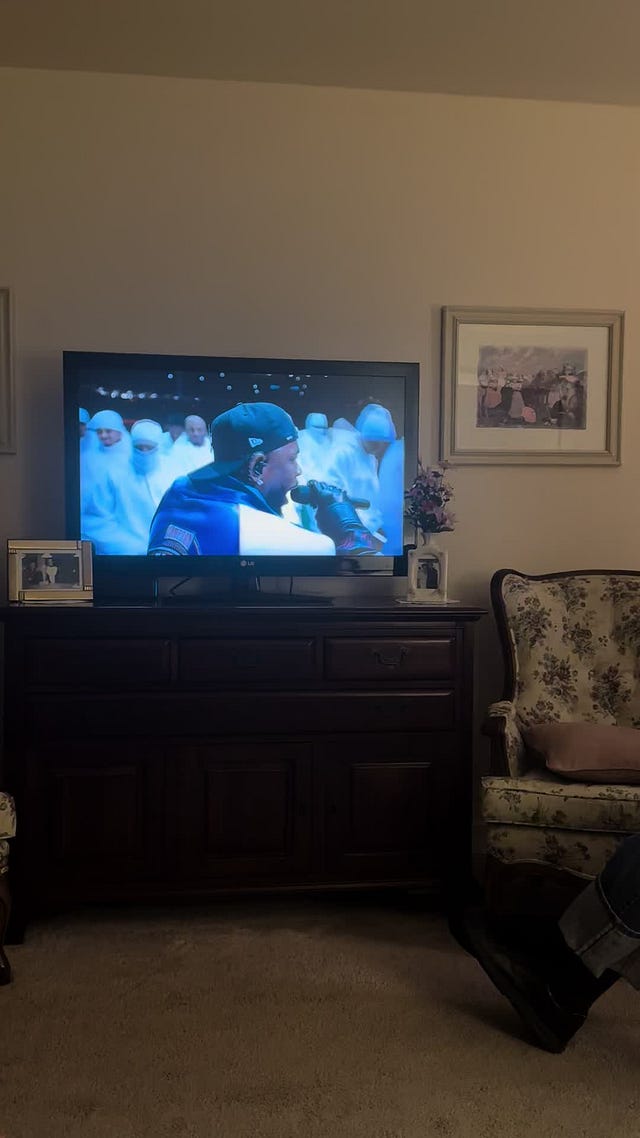On the biggest stage in America, Kendrick Lamar delivered a performance that was not just a spectacle but a seismic moment in cultural and political storytelling. At Super Bowl LIX, before the would-be Emperor Trump and an audience of over 100 million, Lamar took the very concept of bread and circuses and inverted it. What could have been an apolitical performance designed to entertain the masses instead became a masterclass in subversive resistance, artistic literacy, and cultural commentary on the state of America.
Kendrick’s halftime show was polarizing—not simply in terms of ideology, but in comprehension itself. The cultural divide that defines contemporary politics was on full display as some immediately grasped the profundity of his symbolism, while others were left bewildered. In many ways, the performance functioned like contemporary ballet: requiring a degree of artistic literacy to fully understand the narrative woven through movement, music, and metaphor. For those who could read between the lines, it was a battle cry, an act of defiance, and an offering of an alternative future.

 Tiktok failed to load.
Tiktok failed to load.Enable 3rd party cookies or use another browser
Uncle Sam and the Game of Being Black in America
Samuel L. Jackson’s portrayal of Uncle Sam set the stage—literally and figuratively. The decision to cast a Black man in this role was itself a challenge to the dominant imagery of American nationalism. But Jackson’s narration was more than symbolic; it framed the entire performance as a game—not of football, but of survival and identity for Black Americans. From code-switching to mass incarceration to the unspoken rules of how loud or how ‘Black’ one can be in public spaces, Kendrick’s performance was an indictment of the structures that define Black life in America.
His lyrics, brought to life by dancers and intricate routines, illustrated these struggles. But the most visually arresting metaphor was the use of red and blue—the colors of the Bloods and Crips, two of America’s most notorious street organizations. Lamar has long been interested in the transformation of these warring factions, and last year on Juneteenth, he hosted a concert in South Central L.A. that brought together rival gang members in an unprecedented show of unity. At the Super Bowl, he built upon that moment, using the NFL’s grand stage to depict red and blue not as rivals but as necessary partners in the larger struggle for Black self-determination.
While mainstream media fixated on Kendrick’s lyrical attacks on Drake, they missed the deeper significance. For Lamar, Drake is not just a rival rapper—he is the embodiment of the cultural predator, the colonizer who profits from Black art without reciprocating its struggle. The real battle is not between two musicians; it is between authenticity and appropriation, between those who cultivate culture and those who extract from it. In this context, Kendrick’s halftime performance was not about celebrity feuds but about defining the future of Black artistry and its political potential.
The Revolution Will Not Be Televised, or Will It?
The climax of the performance came with TV Off, Kendrick’s homage to Gil Scott-Heron’s legendary declaration that “The Revolution Will Not Be Televised.” The performance began with Kendrick proclaiming, “The revolution ‘bout to be televised,” an ironic twist that played with the very medium of the Super Bowl broadcast. But as the song progressed, it became clear that Lamar was not contradicting Scott-Heron, but rather expanding on his premise. Even with a platform as massive as the Super Bowl, true revolution is not something that can be passively consumed. His final message, staring directly into the lens broadcasting to millions, was simple and radical: Turn your TV off.
And then, the exclamation point—during the final moments of the performance, a member of the ensemble held up a Free Palestine and Free Sudan flag, solidifying the performance as a political act, one that extended beyond the confines of American race relations into global resistance movements. This was not just a halftime show; it was an overture to what may unfold in the coming months, as the simmering conflicts in the U.S. begin to boil over into something far larger.
In an era where spectacle is designed to numb, Kendrick Lamar used America’s most-watched event to shake his audience awake. His halftime performance was both a reflection of current tensions and a warning of what’s to come. If 2024 marked a year of rising political, racial, and economic strife, 2025 may be the year where those tensions explode. Lamar’s performance was a call to recognize the game being played, to understand the stakes, and, most importantly, to act.
This was not just a halftime show—it was a prophecy.
 Tiktok failed to load.
Tiktok failed to load.Enable 3rd party cookies or use another browser





